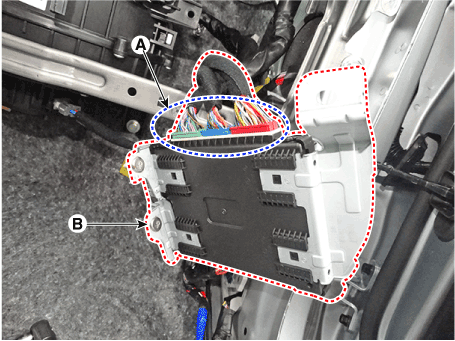Hyundai Santa Fe: Tire Pressure Monitoring System / TPMS Receiver. Repair procedures
Hyundai Santa Fe (TM) 2019-2025 Service Manual / Suspension System / Tire Pressure Monitoring System / TPMS Receiver. Repair procedures
| Replacement |
[TPMS Receiver (integrated Body control Unit (IBU))]
| 1. |
Turn the ignition switch OFF and disconnect the battery negative (-)
cable.
|
| 2. |
Remove the glove box.
(Refer to Body - "Glove Box")
|
| 3. |
Disconnect the body control module connectors (A) and then remove the
integrated body control unit (B).
|
| 4. |
Install in the reverse order of removal.
|
| 5. |
After replacing the receiver, learn by using self-diagnostic device
GDS.
|
| Diagnosis procedure by using diagnostic device |
The main contents of diagnostic method using diagnostic device are as follows:
| 1. |
Connect self-diagnosis connector (16 pins) located in the lower driver
side crash pad to self-diagnosis device, and then turn on the self-diagnosis
device after key is ON.
|
| 2. |
Select the "vehicle model" and "TPMS" on GDS vehicle selection screen,
then select OK.
|
[Vehicle Name Writing Method]
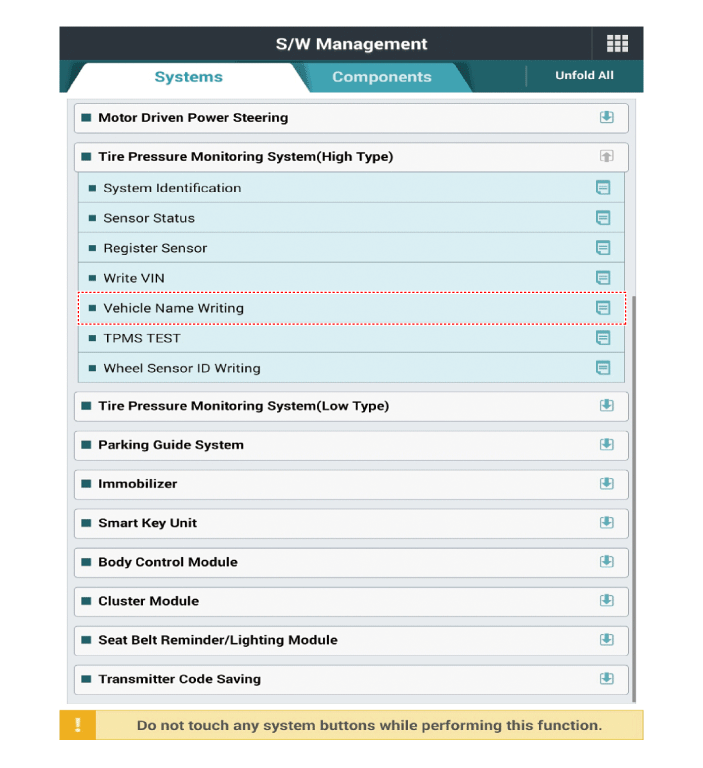
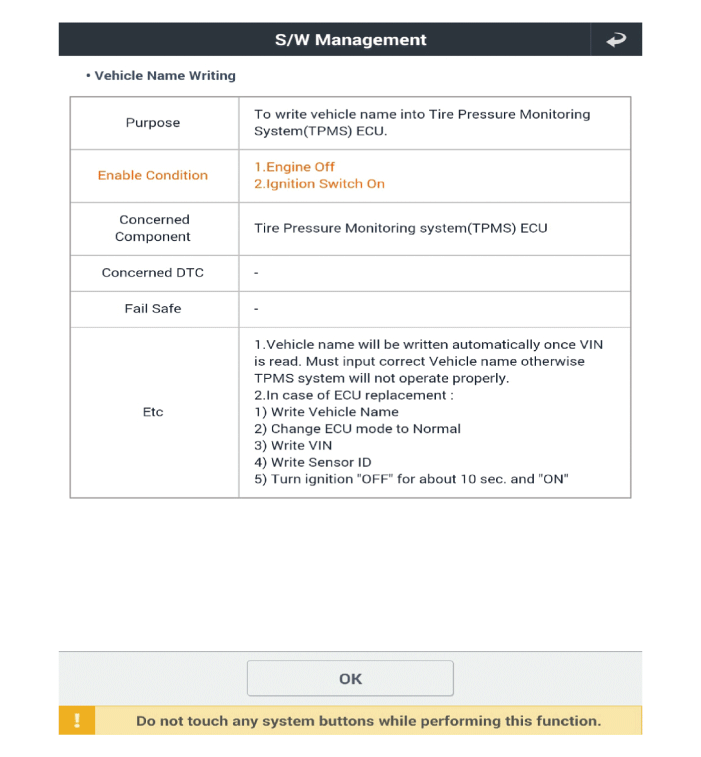
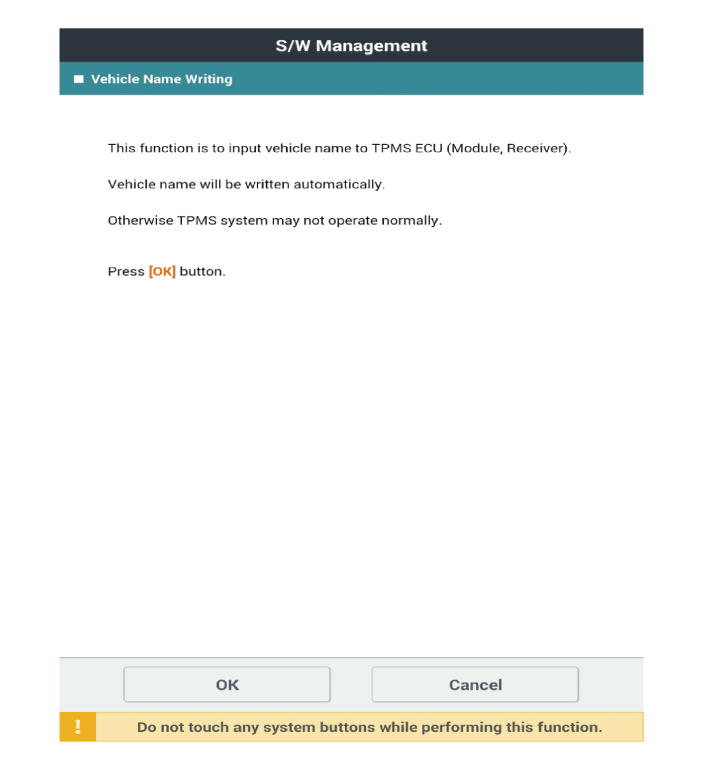
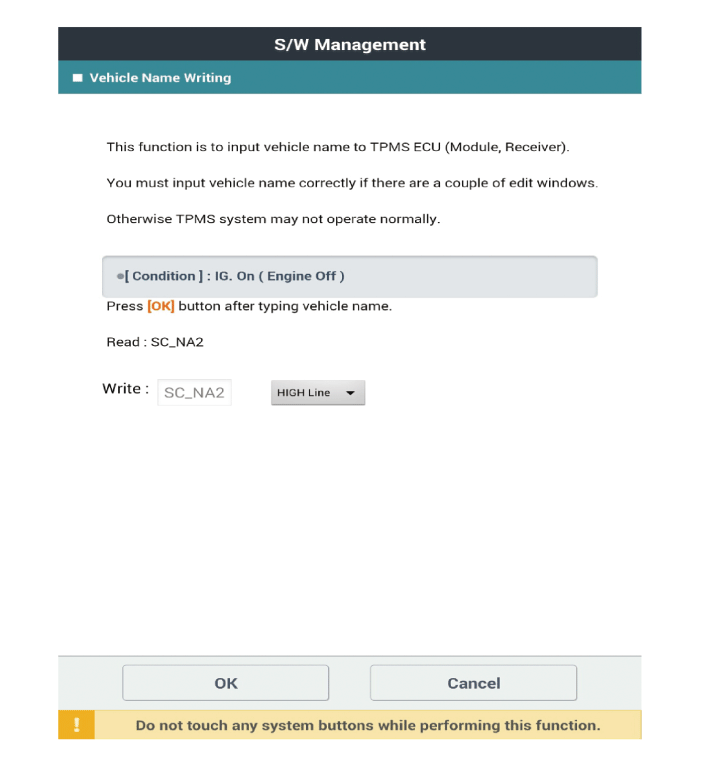
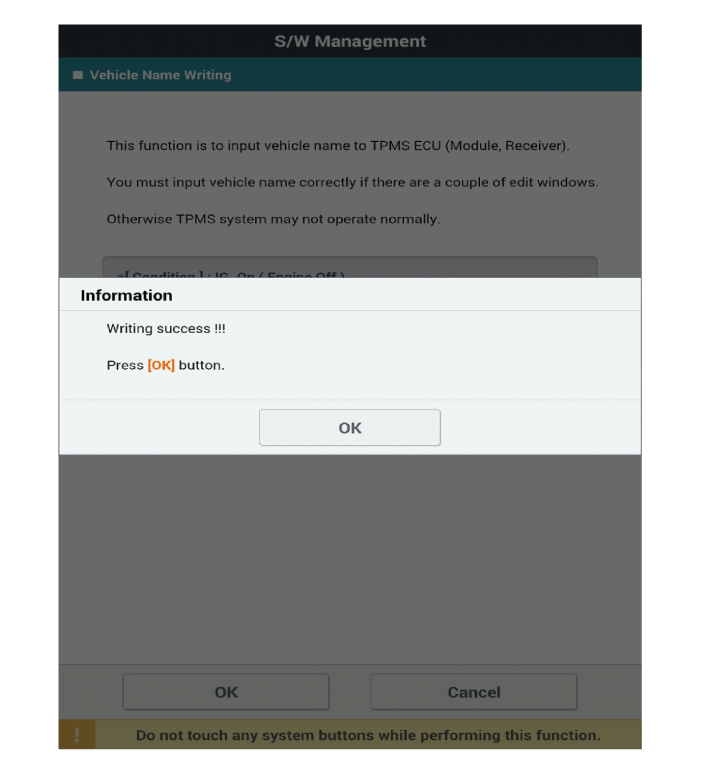
[Wheel Sensor ID Writing Method]
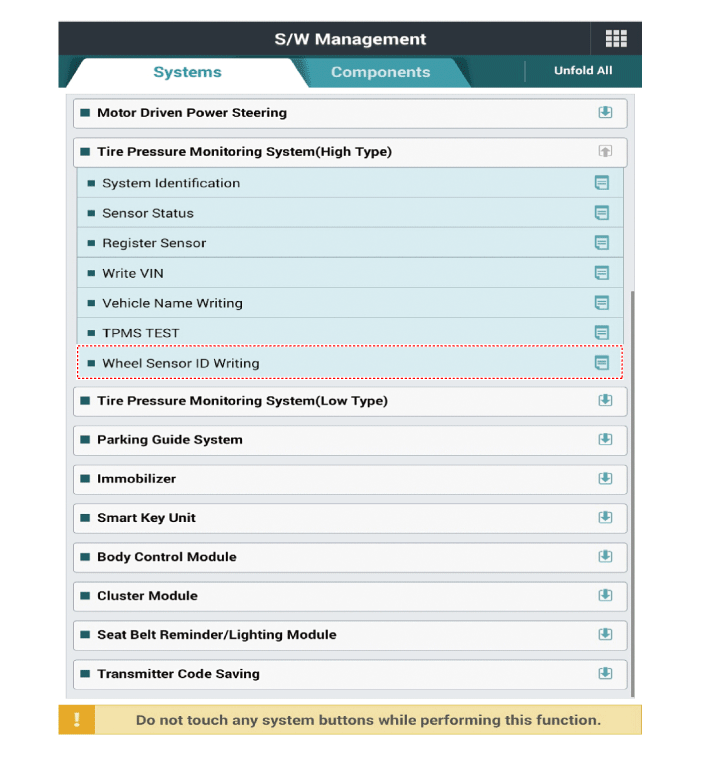
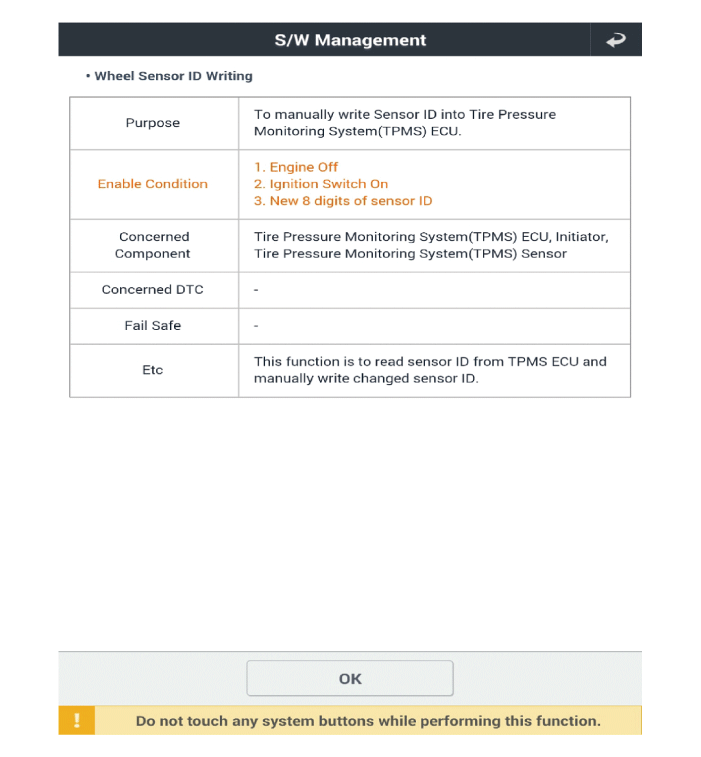
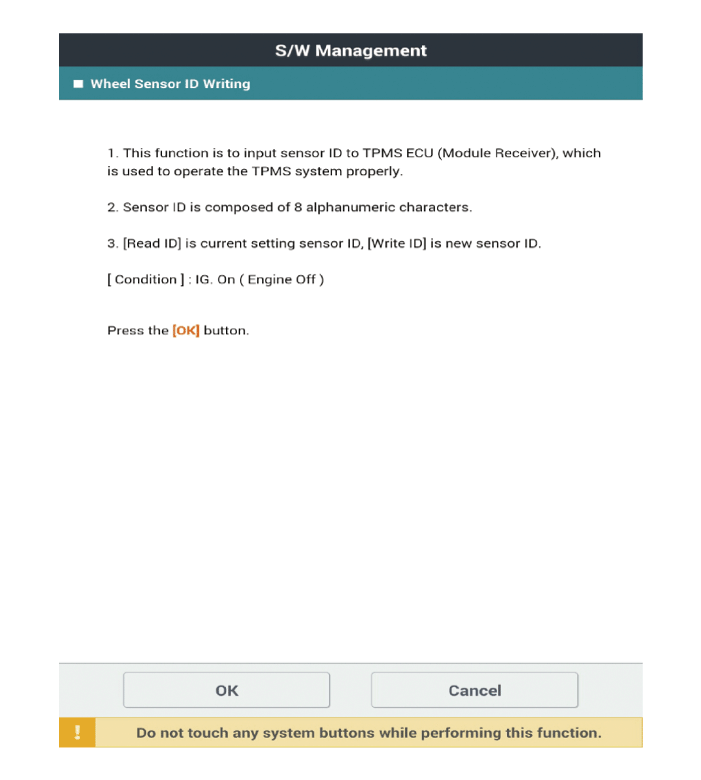
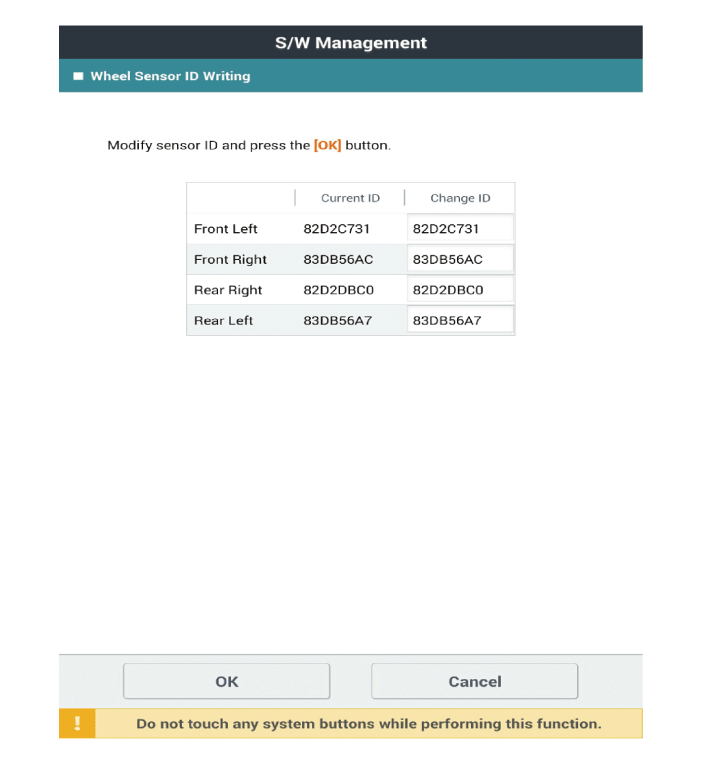
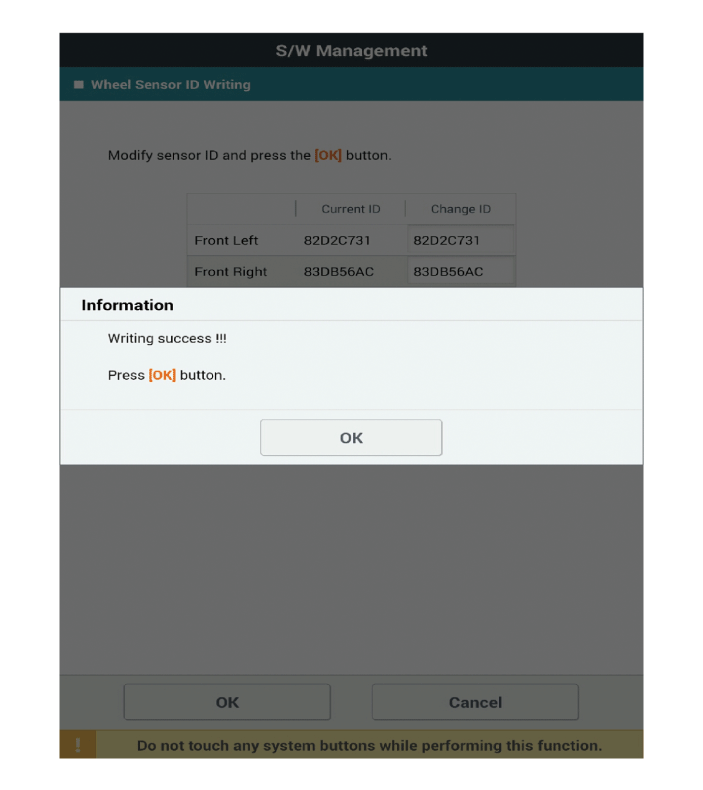
 TPMS Receiver. Description and operation
TPMS Receiver. Description and operation
Description
TPMS Receiver : BCM(body control module) integrated management
1.
Mode
(1)
Virgin State
•
The receiver as a sole part is shipped in this state...
Other information:
Hyundai Santa Fe (TM) 2019-2025 Service Manual: SRS Control Module (SRSCM). Description and operation
Description The primary purpose of the SRSCM (Supplemental Restraints System Control Module) is to discriminate between an event that warrants restraint system deployment and an event that does not. The SRSCM must decide whether to deploy the restraint system or not...
Hyundai Santa Fe (TM) 2019-2025 Service Manual: Drive Plate. Repair procedures
Removal and Installation • Be careful not to damage the parts located under the vehicle (floor under cover, fuel filter, fuel tank and canister) when raising the vehicle using the lift...
Categories
- Manuals Home
- 4th Generation Santa Fe Owners Manual
- 4th Generation Santa Fe Service Manual
- Engine Control System
- Immobilizer system
- Child-protector rear door locks
- New on site
- Most important about car
Instrument panel overview
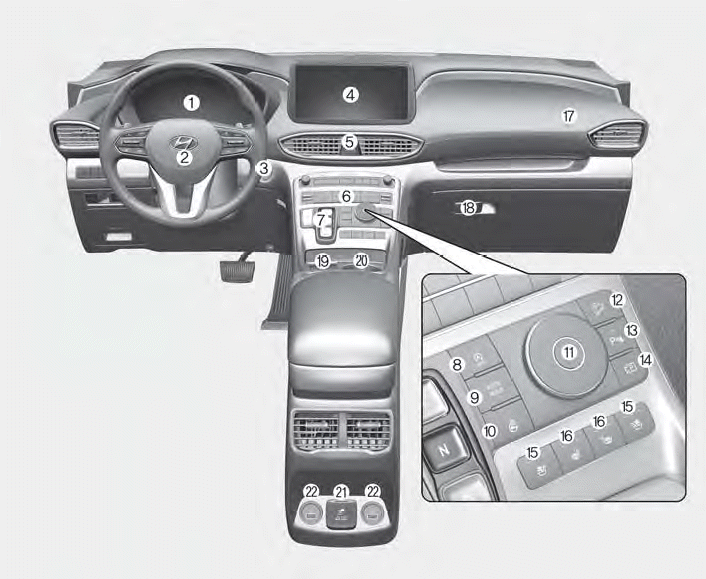
1. Instrument cluster
2. Driver’s front air bag
3. Engine Start/Stop button
4. Infotainment system
5. Hazard warning lamp switch
6. Climate control system
7. Shift button
8. ISG (Idle Stop and Go) button
9. Auto Hold button
10. Heated steering wheel button
11. Drive mode button
12. DBC (Downhill Brake Control) button
13. Parking Safety button
14. Parking/View button
15. Air ventilation seat button
16. Seat warmer
17. Passenger’s front air bag
18. Glove box
19. Wireless charging system pad
20. Cup holder
21. AC inverter
22. USB charger
Copyright © 2025 www.hsafe4.com

